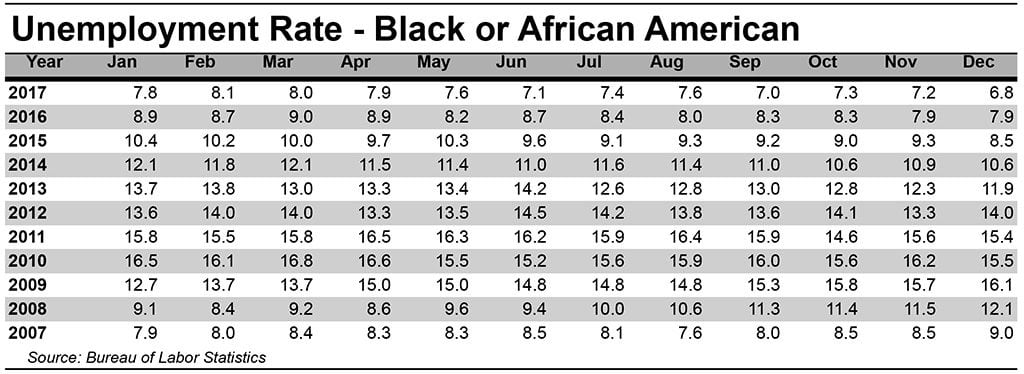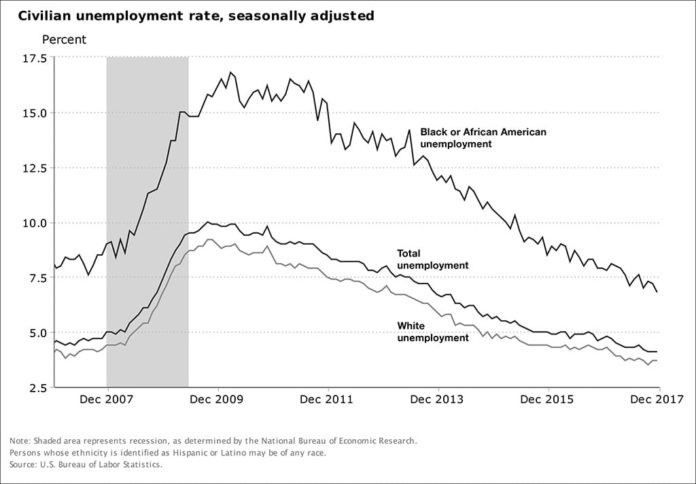The Bureau of Labor Statistics began tracking the rate for African-American workers over age 16 in 1972, and since that time, the rate has never fallen below 7 percent.
That is, until December, when it was 6.8 percent.
Last year, African-American unemployment rose early in the year, reaching 8 percent in March. By September, it had fallen back to 7 percent, and by the end of the year, it took a dive below that 7 percent line for the first time ever.
For comparison, the white unemployment rate was 3.7 percent in December, and the overall unemployment rate was 4.1 percent that same month.
The most recent data for state and metropolitan areas are from November.
In November, Tennessee had a 3.1 percent unemployment rate, one percentage point below the national rate. Arkansas’ rate was 3.7 percent and in Mississippi the rate was 4.8 percent.
Memphis had an unemployment rate of 3.9 percent in November. Compare that to 2.6 percent for the Nashville-Davidson-Murfreesboro-Franklin area.

But job growth is slowing down
However, job growth numbers were down in that same month. According to the Labor Department, 148,000 jobs were created in December, compared to the 252,000 jobs created in November.
What’s more, the year 2017 saw 2.1 million jobs created, down from 2016’s 2.2 million.
This despite the fact that President Donald Trump has often promised that his policies and presidency will be good for the economy. For example, Trump’s supporters often cite the bump in the stock market shortly after his election as proof that Trump will be good for jobs.
Promised growth with the tax bill
Still, the White House and Republicans have promised that the recently passed and highly unpopular tax reform bill will help the economy and boost job growth.
The bill was signed on Dec. 22, so the administration believes the year 2018 will see the benefits of that bill.
“In 2018, the first wave of tax reform job and wage gains should produce continued tightness in the labor market and thus bigger take-home checks for workers, as well as increased labor force participation as more workers get off the sidelines and re-enter the working world,” the Council of Economic Advisers said in a statement.
That remains to be seen.






